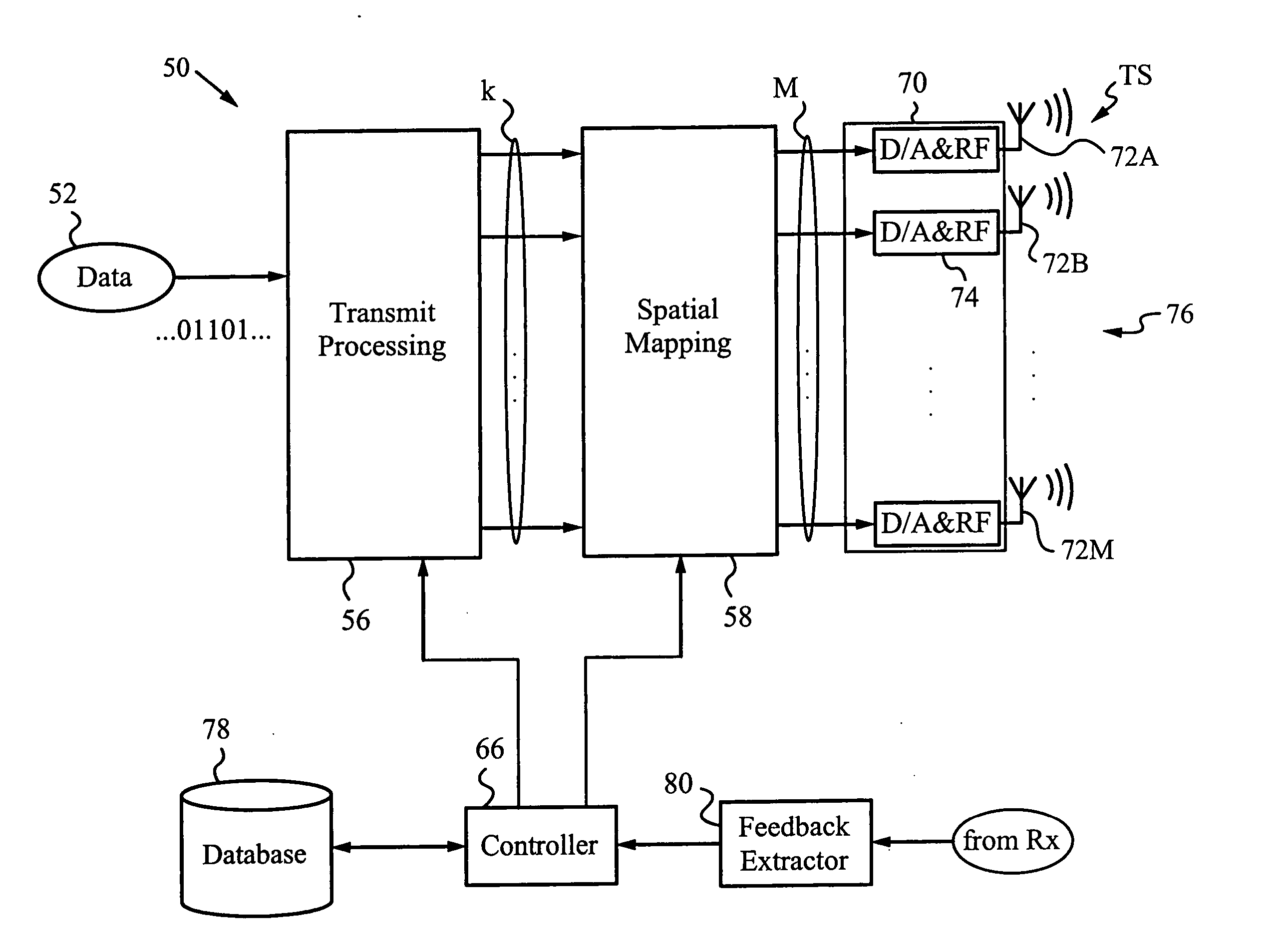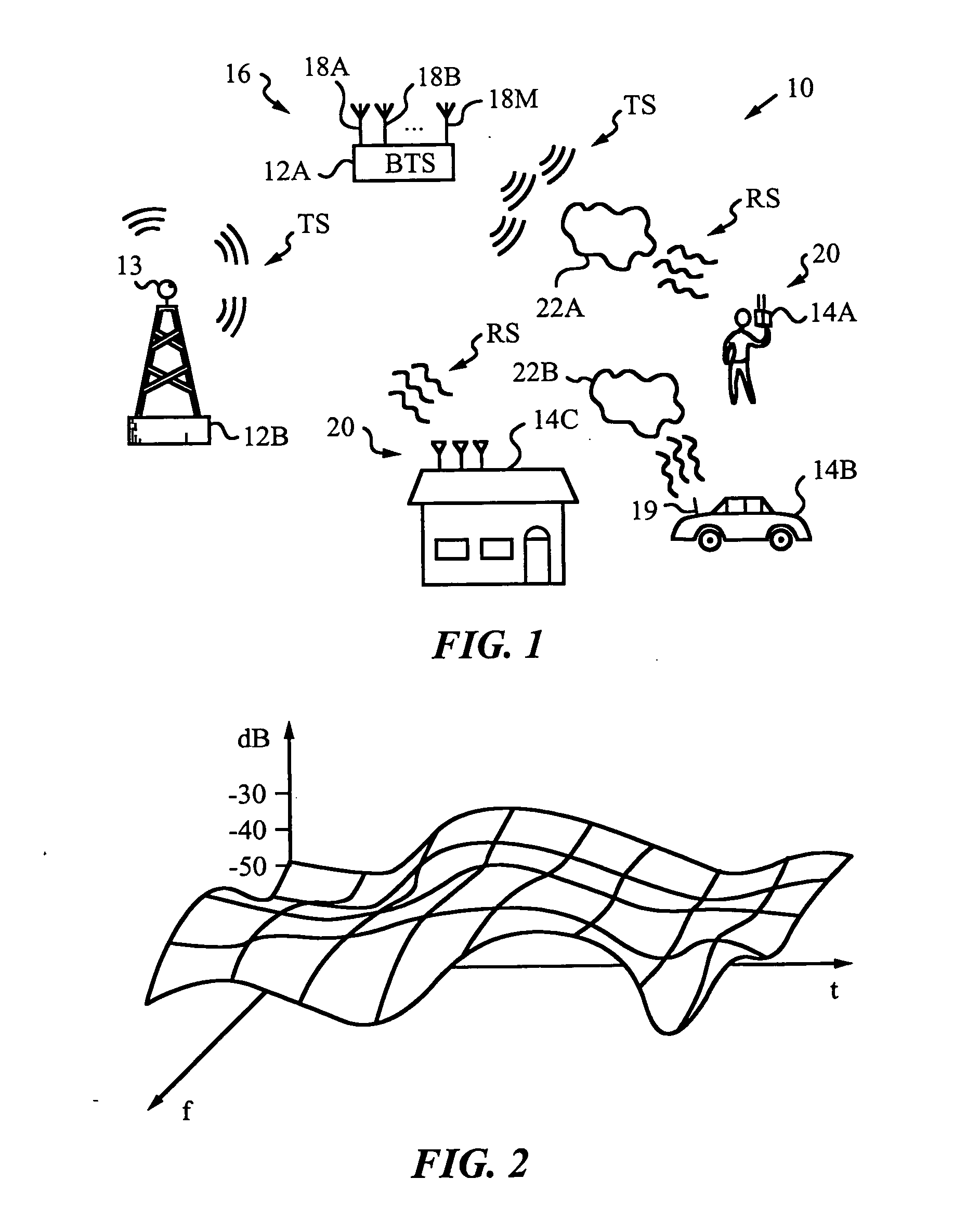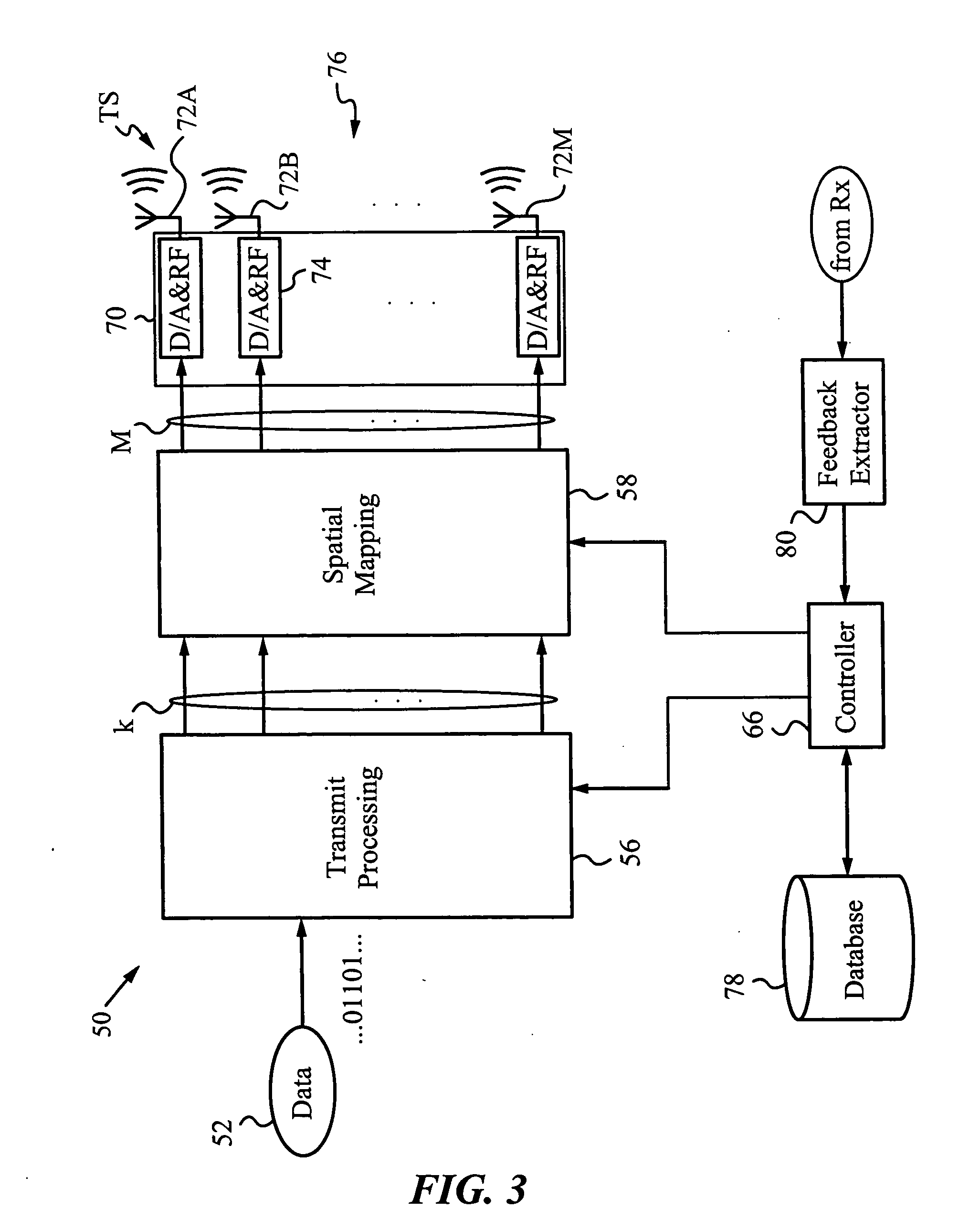Mode selection for data transmission in wireless communication channels based on statistical parameters
a wireless communication channel and statistical parameter technology, applied in the field of wireless communication systems and methods, can solve the problems of inability to meet the current data rate, the coding technique and data format may no longer be feasible, excessive corruption yielding unacceptable communication parameters, and transmitted data can exhibit excessive bit-error rate or packet error rate, etc., to maximize data capacity, signal quality, spectral efficiency or throughput
- Summary
- Abstract
- Description
- Claims
- Application Information
AI Technical Summary
Benefits of technology
Problems solved by technology
Method used
Image
Examples
Embodiment Construction
and the preferred and alternative embodiments is presented below in reference to the attached drawing figures.
BRIEF DESCRIPTION OF THE FIGURES
FIG. 1 is a simplified diagram illustrating a communication system in which the method of the invention is applied.
FIG. 2 is a graph illustrating the effects of channel variation in time and frequency.
FIG. 3 is a block diagram of an exemplary transmit unit in accordance with the invention.
FIG. 4 is a block diagram of an exemplary receive unit in accordance with the invention.
FIG. 5 is a schematic diagram illustrating data transmitted in a wireless communication channel.
DETAILED DESCRIPTION
The method and systems of the invention will be best understood after first considering the simplified diagram of FIG. 1 illustrating a portion of a wireless communication system 10, e.g., a cellular wireless system in which the method of invention can be employed. For explanation purposes, downlink communication will be considered where a transmit uni...
PUM
 Login to View More
Login to View More Abstract
Description
Claims
Application Information
 Login to View More
Login to View More - R&D
- Intellectual Property
- Life Sciences
- Materials
- Tech Scout
- Unparalleled Data Quality
- Higher Quality Content
- 60% Fewer Hallucinations
Browse by: Latest US Patents, China's latest patents, Technical Efficacy Thesaurus, Application Domain, Technology Topic, Popular Technical Reports.
© 2025 PatSnap. All rights reserved.Legal|Privacy policy|Modern Slavery Act Transparency Statement|Sitemap|About US| Contact US: help@patsnap.com



